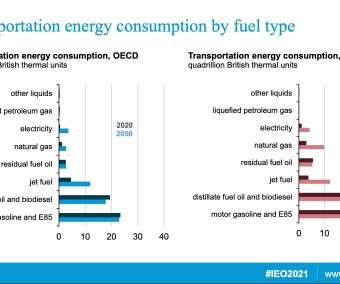EIA projects increases in global energy consumption and emissions through 2050
Green Car Congress
OCTOBER 7, 2021
According to the IEO2021 Reference case, which projects future energy trends based on current laws and regulations, renewable energy consumption has the strongest growth among energy sources through 2050. Oil and natural gas production will continue to grow, mainly to support increasing energy consumption in developing Asian economies.














Let's personalize your content